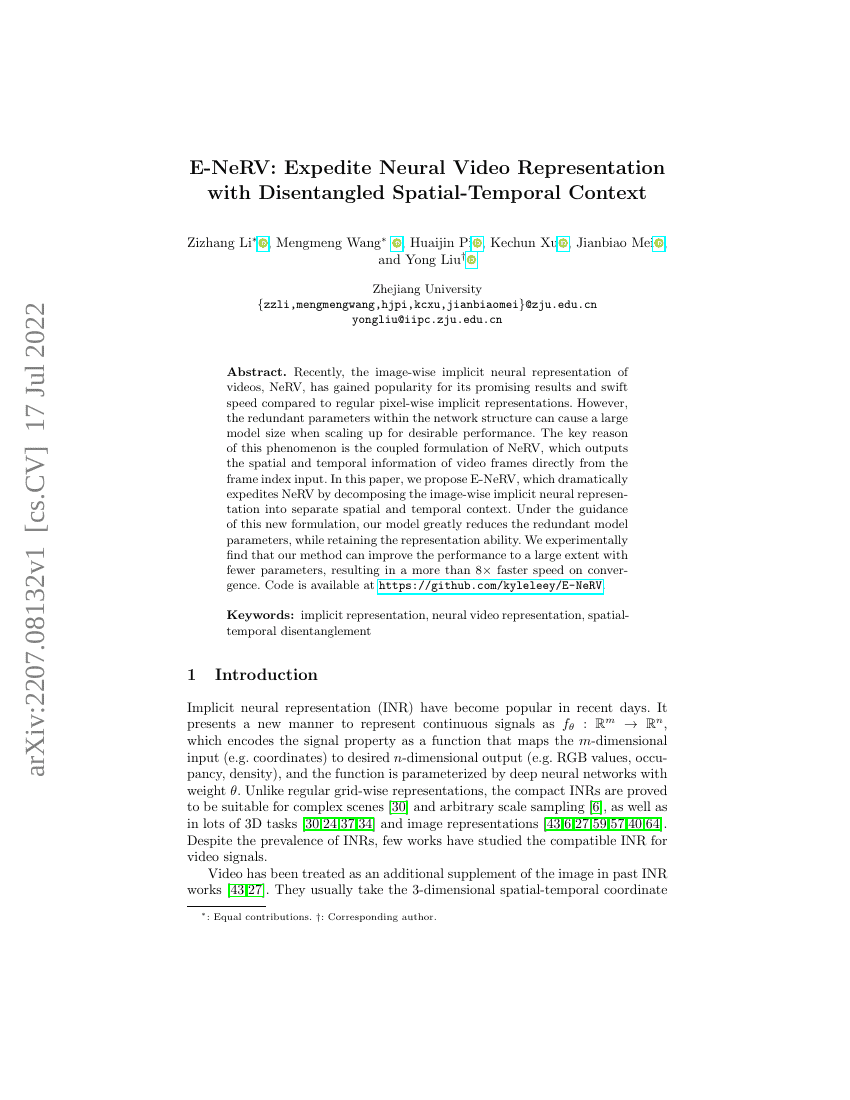Command Palette
Search for a command to run...
E-NeRV: Expedite Neural Video Representation with Disentangled Spatial-Temporal Context
Zizhang Li Mengmeng Wang Huaijin Pi Kechun Xu Jianbiao Mei Yong Liu

Abstract
Recently, the image-wise implicit neural representation of videos, NeRV, has gained popularity for its promising results and swift speed compared to regular pixel-wise implicit representations. However, the redundant parameters within the network structure can cause a large model size when scaling up for desirable performance. The key reason of this phenomenon is the coupled formulation of NeRV, which outputs the spatial and temporal information of video frames directly from the frame index input. In this paper, we propose E-NeRV, which dramatically expedites NeRV by decomposing the image-wise implicit neural representation into separate spatial and temporal context. Under the guidance of this new formulation, our model greatly reduces the redundant model parameters, while retaining the representation ability. We experimentally find that our method can improve the performance to a large extent with fewer parameters, resulting in a more than $8\times$ faster speed on convergence. Code is available at https://github.com/kyleleey/E-NeRV.
Code Repositories
Benchmarks
| Benchmark | Methodology | Metrics |
|---|---|---|
| video-reconstruction-on-uvg | E-NeRV | Average PSNR (dB): 34.85 Model Size (M): 13.02M |
Build AI with AI
From idea to launch — accelerate your AI development with free AI co-coding, out-of-the-box environment and best price of GPUs.